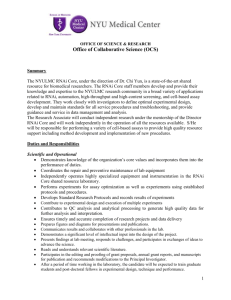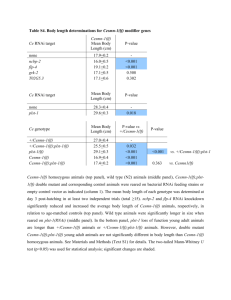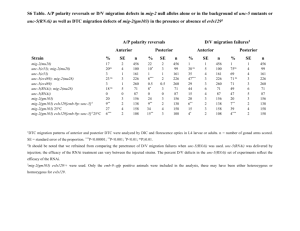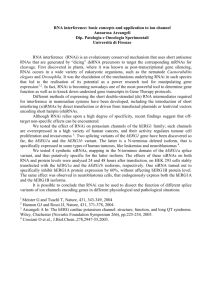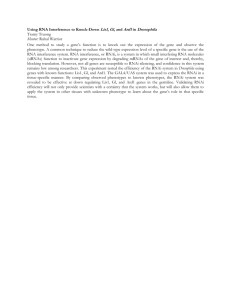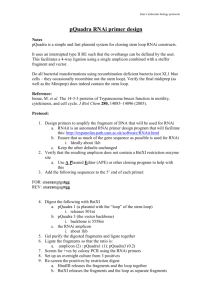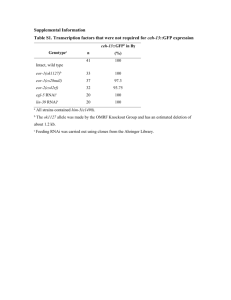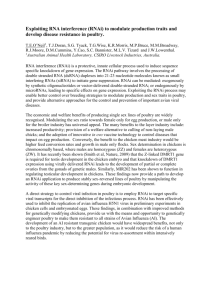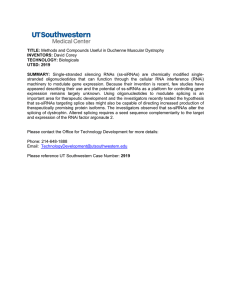Understanding the Role of Actin Dynamics in Protonemal Tip Growth... Update on Transient and Inducible RNAi
advertisement
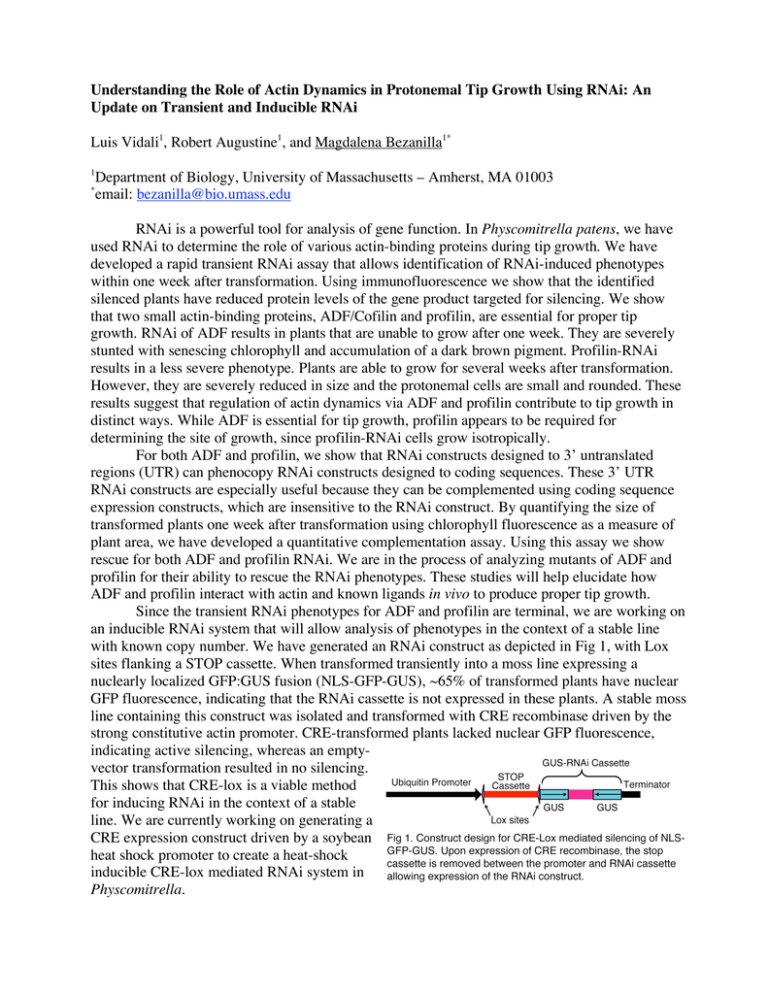
Understanding the Role of Actin Dynamics in Protonemal Tip Growth Using RNAi: An Update on Transient and Inducible RNAi Luis Vidali1, Robert Augustine1, and Magdalena Bezanilla1* 1 * Department of Biology, University of Massachusetts – Amherst, MA 01003 email: bezanilla@bio.umass.edu RNAi is a powerful tool for analysis of gene function. In Physcomitrella patens, we have used RNAi to determine the role of various actin-binding proteins during tip growth. We have developed a rapid transient RNAi assay that allows identification of RNAi-induced phenotypes within one week after transformation. Using immunofluorescence we show that the identified silenced plants have reduced protein levels of the gene product targeted for silencing. We show that two small actin-binding proteins, ADF/Cofilin and profilin, are essential for proper tip growth. RNAi of ADF results in plants that are unable to grow after one week. They are severely stunted with senescing chlorophyll and accumulation of a dark brown pigment. Profilin-RNAi results in a less severe phenotype. Plants are able to grow for several weeks after transformation. However, they are severely reduced in size and the protonemal cells are small and rounded. These results suggest that regulation of actin dynamics via ADF and profilin contribute to tip growth in distinct ways. While ADF is essential for tip growth, profilin appears to be required for determining the site of growth, since profilin-RNAi cells grow isotropically. For both ADF and profilin, we show that RNAi constructs designed to 3’ untranslated regions (UTR) can phenocopy RNAi constructs designed to coding sequences. These 3’ UTR RNAi constructs are especially useful because they can be complemented using coding sequence expression constructs, which are insensitive to the RNAi construct. By quantifying the size of transformed plants one week after transformation using chlorophyll fluorescence as a measure of plant area, we have developed a quantitative complementation assay. Using this assay we show rescue for both ADF and profilin RNAi. We are in the process of analyzing mutants of ADF and profilin for their ability to rescue the RNAi phenotypes. These studies will help elucidate how ADF and profilin interact with actin and known ligands in vivo to produce proper tip growth. Since the transient RNAi phenotypes for ADF and profilin are terminal, we are working on an inducible RNAi system that will allow analysis of phenotypes in the context of a stable line with known copy number. We have generated an RNAi construct as depicted in Fig 1, with Lox sites flanking a STOP cassette. When transformed transiently into a moss line expressing a nuclearly localized GFP:GUS fusion (NLS-GFP-GUS), ~65% of transformed plants have nuclear GFP fluorescence, indicating that the RNAi cassette is not expressed in these plants. A stable moss line containing this construct was isolated and transformed with CRE recombinase driven by the strong constitutive actin promoter. CRE-transformed plants lacked nuclear GFP fluorescence, indicating active silencing, whereas an emptyvector transformation resulted in no silencing. This shows that CRE-lox is a viable method for inducing RNAi in the context of a stable line. We are currently working on generating a CRE expression construct driven by a soybean heat shock promoter to create a heat-shock inducible CRE-lox mediated RNAi system in Physcomitrella.

